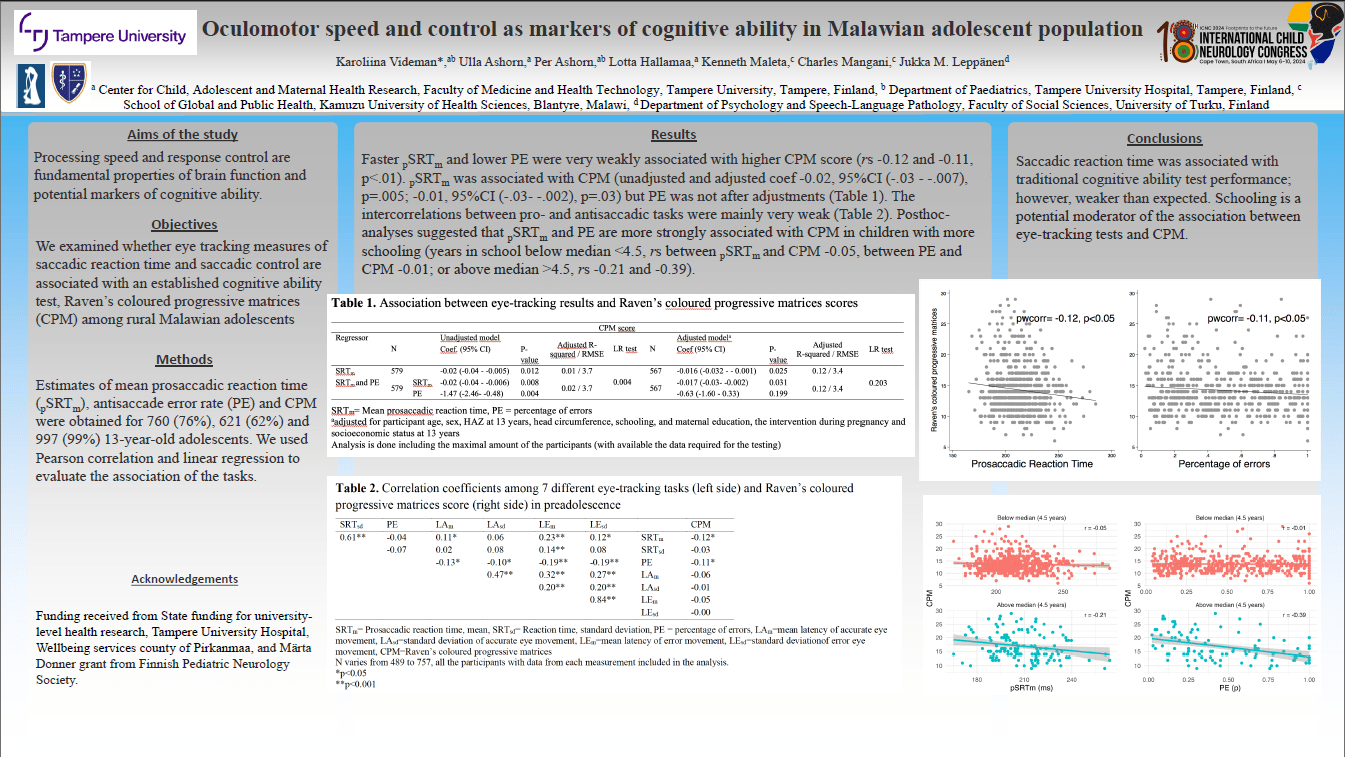Oculomotor Speed And Control As Markers Of Cognitive Ability In Malawian Adolescent Population
Aims of the study Processing speed and response control are fundamental properties of brain function and potential markers of cognitive ability. We examined whether eye tracking measures of saccadic reaction time and saccadic control are associated with an established cognitive ability test, Raven’s coloured progressive matrices (CPM) among rural Malawian adolescents.
Methods Estimates of mean prosaccadic reaction time (pSRTm), antisaccade error rate (PE) and CPM were obtained for 760 (76%), 621 (62%) and 997 (99%) 13-year-old adolescents. We used Pearson correlation and linear regression to evaluate the association of the tasks.
Results Faster pSRTm and lower PE were very weakly associated with higher CPM score (rs -0.12 and -0.11, p<.01). pSRTm was associated with CPM (unadjusted and adjusted coef -0.02, 95%CI (-.03 - -.007), p=.005; -0.01, 95%CI (-.03- -.002), p=.03) but PE was not after adjustments. The intercorrelations between pro- and antisaccadic tasks were mainly very weak (0.11 to 0.23). Posthoc-analyses suggested that pSRTm and PE are more strongly associated with CPM in children with more schooling (years in school below median <4.5, rs between pSRTm and CPM -0.05, between PE and CPM -0.01; or above median >4.5, rs -0.21 and -0.39).
Conclusions Saccadic reaction time was associated with traditional cognitive ability test performance; however, weaker than expected. Schooling is a potential moderator of the association between eye-tracking tests and CPM.
Disclosures Funding: State funding for university-level health research, Tampere University Hospital, Wellbeing services county of Pirkanmaa and Märta Donner grant.
Karoliina Videman
Tampere University
Finland
Ulla Ashorn
Tampere University
Finland
Per Ashorn
Tampere University
Finland
Lotta Hallamaa
Tampere University
Finland
Kenneth Maleta
Kamuzu University of Health Sciences
Malawi
Charles Mangani
Kamuzu University of Health Sciences
Malawi
Jukka M. Leppänen
Turku University
Finland
